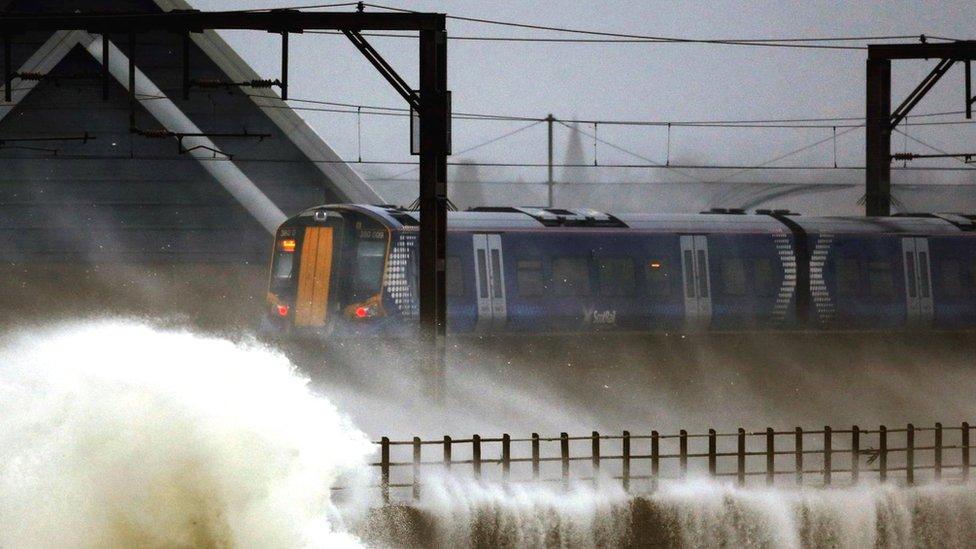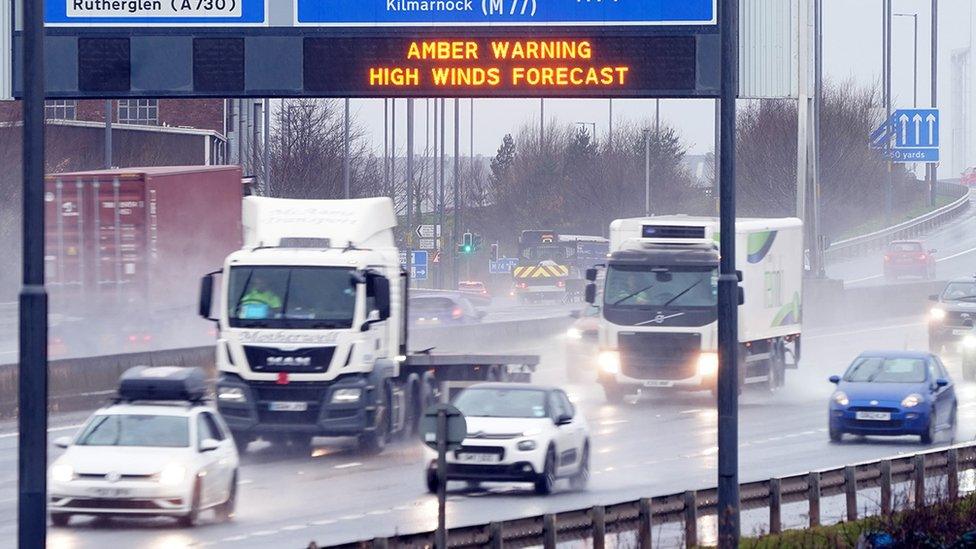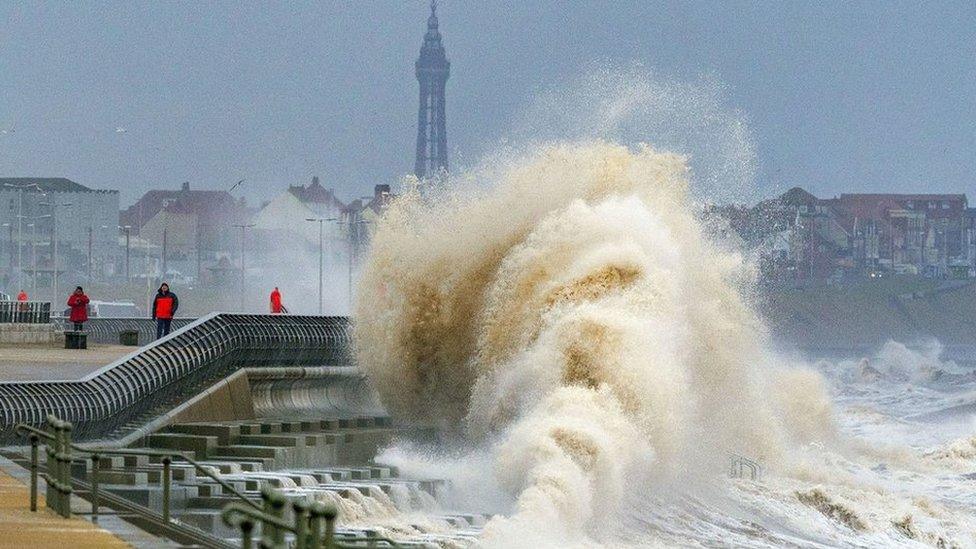Storm Eunice: How, and why, do storms get their names?
- Published

What do Gladys, Ruby and Logan all have in common? Ringing any bells? Probably not.
Well, they are all names of storms. We've already had Malik, Corrie and Dudley this year and now it's time for Eunice.
Storm Dudley made its impact felt on Wednesday into Thursday this week, causing disruption across the UK - people without power, trains cancelled, lorries overturned.
Overnight on Friday, Storm Eunice swept in and made its presences felt.
But how do storms get their names? Here's everything you need to know.
Why are storms named?
There's quite a logical explanation for naming a storm. It's simply to make people more aware when severe weather is on the way, with the idea being you'll hear the name and you'll know serious wind, rain or snow is coming.
That way, people are better placed to keep themselves and their property safe.
It's still a relatively new thing. The Met Office started doing it in 2015 along with forecasters in Ireland and then later the Netherlands joined in.

Most rail services in Scotland have been cancelled
When is a storm named?
A name is given when a storm is expected to cause medium or high impacts, or in weather speak, has the potential to cause an amber or red warning.
These warnings come via the Met Office National Severe Weather Warning Service and are issued for things like rain, wind, snow, ice, fog and extreme heat.
Will Lang, head of the service, tells Radio 1 Newsbeat: "We're all aware of some of the severe weather that has been witnessed across Europe and globally in recent months and we work to use any tool at our disposal to ensure the public is informed of potential risks, and naming storms is just one way we do that.
"We know naming storms helps raise awareness of the impacts of severe weather and ensures clarity for the public when they need it most."
Allow X content?
This article contains content provided by X. We ask for your permission before anything is loaded, as they may be using cookies and other technologies. You may want to read X’s cookie policy, external and privacy policy, external before accepting. To view this content choose ‘accept and continue’.
How are the names chosen?
Now for the fun bit.
The Met Office asks the public to suggest possible names and a new list is published every year.
The A-Z of names, which runs from early September to late August, flips between male and female so we've already seen Arwen, Barra and Corrie in this cycle.
More than 10,000 submissions were made by the UK public last year, with the chosen names reflecting some of the more popular choices, as well as some of the heart-warming reasons behind the nominations.
This includes a cat who "comes in and acts like a storm" (hello Storm Ruby) while Storm Logan gives a nod to a goalkeeper grandson who is as "quick as lighting".
When a storm arrives, forecasters will pick the next name from the list, alphabetically.
Up next after Eunice is Storm Franklin.
Why are there no storms for Q, U, X, Y and Z?
Bad news if your name begins with Q,U,X,Y or Z - you're never going to get a storm named after you.
This is to avoid a clash with US hurricane naming conventions.
Dangerous weather ahead
Storm Eunice brings with it a red weather warning - the strongest alert which means there is life-threatening weather expected and a risk of big disruption to travel and energy supplies.
There are red warnings in place for London, the South East, parts of the East of England and south Wales, with millions being told to stay at home.
On top of that, Eunice could bring snow in high areas and over the hills of northern England, into southern Scotland and Northern Ireland.


Follow Newsbeat on Instagram, external, Facebook, external, Twitter, external and YouTube, external.
Listen to Newsbeat live at 12:45 and 17:45 weekdays - or listen back here.
Related topics
- Published16 February 2022

- Published17 February 2022
